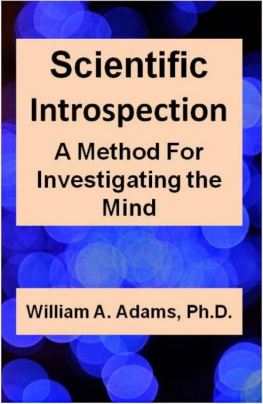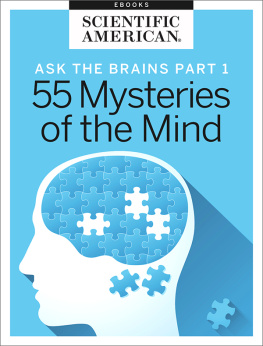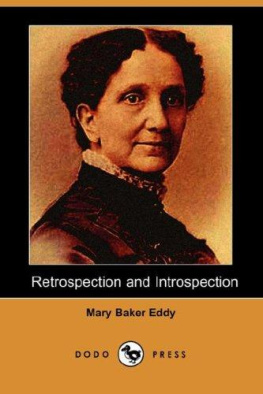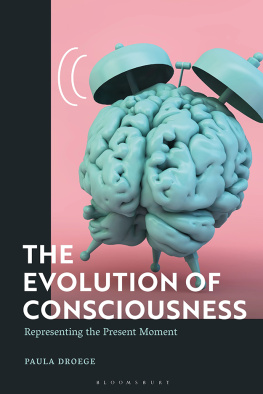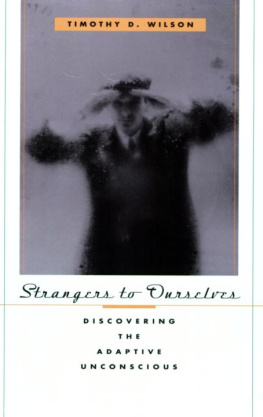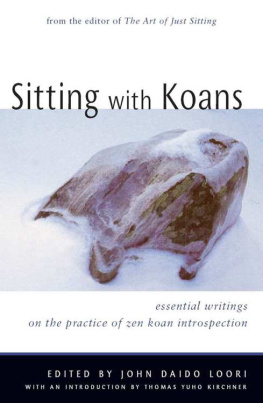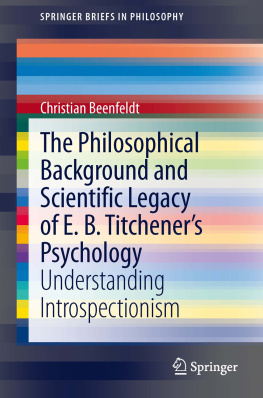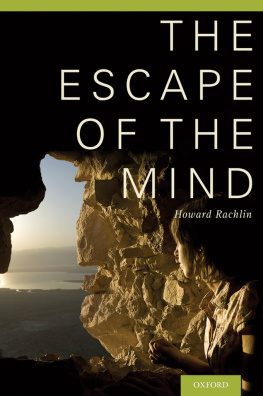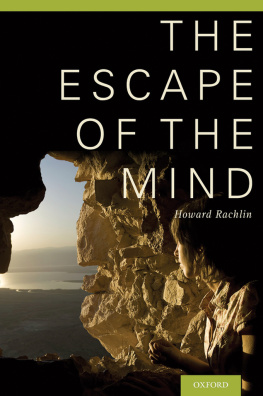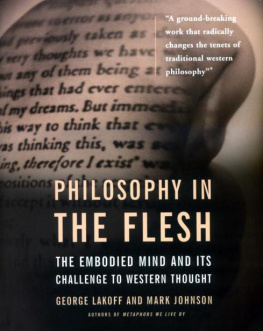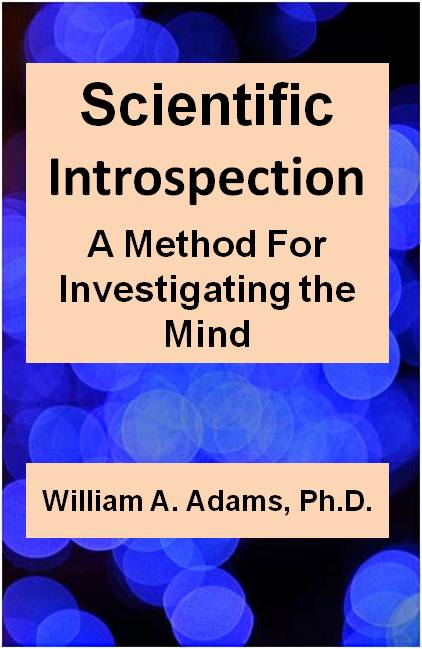
Scientific Introspection
Typographical update December, 2011
William A. Adams, Ph.D.
Brandman University
http://williamaadams.blogspot.com
A Paperless Press publication
ISBN 978-0-9837177-0-6
Smashwords edition
All rights reserved
For information, subsidiary rights or rightto reproduce portions of this work, contact
William A. Adams
bill.adams111(at)gmail.com
Copyright 2011
by William A. Adams
Smashwords Edition, License Note
This ebook is licensed for your personalenjoyment only. This ebook may not be re-sold or given away toother people. If you would like to share this book with anotherperson, please purchase an additional copy for each recipient. Ifyoure reading this book and did not purchase it, or it was notpurchased for your use only, then please return to Smashwords.comand purchase your own copy. Thank you for respecting the hard workof this author.
Table ofContents
Psychologyhas lost its mind. It is now defined as the scientific study ofalmost anything but the mind: the body, the brain, human and animalbehavior, animal-environment interactions, social relationships,information processing, social dynamics, and even the wholeperson. Psychotherapists might say they work every day with thevicissitudes of the mind, and let us thank them for that, but I amlooking for, not a practice, but a systematic intellectual inquiryto discover what the mind is and how it works. There is very littleof that in psychology.
Psychology, as a field of intellectual inquiry,prides itself on being a scientific endeavor. The AmericanPsychological Association encourages even clinical practitioners touse evidence-based psychological practice (EBPP):
The purpose of EBPP is to promote effectivepsychological practice and enhance public health by applyingempirically supported principles of psychological assessment, caseformulation, therapeutic relationship, and interventionAPAencourages the development of health care policies that reflectthis view of evidence-based psychological practice. (AmericanPsychological Association, 2005).
But the methods of science are designed formeasurement of the physical world. There is no scientific way tomeasure, detect or observe intangible, immaterial objects, if anyexist. What can be done then with objects such as thoughts,feelings, images, plans, hopes, deliberations, and urges? These arescientifically undetectable. The brain can be observed, but thatsjust a body part. If you dissect a brain, you find no images,words, numbers, songs, colors, or ideas in there. It is threepounds of meat, a physical thing, not a psychological event.
How can a self-proclaimed scientific study ofpsychology proceed then? Psychologists have developed a uniquestrategy, with roots going back to Gustav Fechners 1860 book,Elements of Psychophysics (Fechner, 1860/1912): We try to makeinferences about the mind from scientific observations of thebehavior of the body. For example, we watch people solve problems,push buttons, make choices, or answer questions, and from thoseobservations, we infer how the mind might be organized or how itworks.
That would be a reasonable strategy if theinferences about the mind were sufficiently constrained, buttheyre usually not. The conclusions psychologists draw fromobservation of brain and behavior are little more than creativeguesses, self-fulfilling hypotheses, or invalid circularinferences.
For example, psychologists Meltzoff and Brooks(2006) review experiments on human infants 12 to 18 months old.They watched infants turn their head to follow the gaze of anadult. Thats remarkable social behavior, when you think about it.But the infants do not follow the adults gaze if the adults eyesare closed. Why not? The authors infer it must be because theinfants are following the adults visual intentionality, not simplythe adults head movements. That is, the infants are interested inwhatever the adult means to look at. Therefore, the authorssuggest, they have observed evidence of mind-reading in infants andit must be inborn, since there would not plausibly have been enoughtime for the infants to learn how to make inferences fromobservation of behavior to mental intentions, after having beenalive only 12 to 18 months (and without language yet).
But how do the experimenters know that theinfants are doing something called gaze-following? The scientificobservation is that the infants move their heads to orient theirfaces to a target that an adult orients toward. They dont do itwhen the adults eyes are closed. The experimenters assumed withoutquestion that the infants observed something in the adult called agaze, when all they observed (and all the experimenters couldobserve also) was a head movement (with eyes open). To gaze is tostare at something for a long time because you find it interestingor attractive or because you are actually thinking of somethingelse. But none of that can be scientifically observed. That is allmental stuff. What you can actually see is head movement and eyemovements. Anything else is inference.
The experimenters assume they observedgaze-following in infants, when all they really observed was morehead movements. Maybe human infants have a built-in behavioralresponse to make head turns of a certain angle when presented withthe appropriate sensory trigger of an adult angular head-movement.That would be a plausible behavioral inference.
The experimenters presupposed that theyunderstood both the adults and the infants mentality, and thenthey interpreted the results of their observations in terms ofthose presuppositions. They did not scientifically observe anythingbut bodily behavior, which alone, provides no justification forinferring mentality.
Now, I do not doubt for a minute that Meltzoffand Brooks observed gaze-following, because I make the sameunscientific presuppositions they did about the intrinsic meaningof certain behavior. I can tell when someone is gazing. So theexperiments are indeed nice demonstrations of mind-reading ininfants. But they are folk-psychology demonstrations that exploitcommon sense understanding of what a gaze is and how yourecognize it when you see it. The experimental observations do not,however, support the scientific inference the experimenters want tomake.
There is nothing wrong with inference inscience. In physics, if a certain subatomic particle is detectedafter a nuclear collision, scientists can infer the presence ofother, unseen particles and their interactions. The inference islogically supported by statistics and by the observed anddocumented laws of physics. There are only so many things thatcould have happened. The inference is tightly constrained.
In psychology though, the inference is more likea free speculation. Did those infants really understand the adultsintentionality? Did an ape really demonstrate long range planning?Can we infer an unconscious process from this persons statement ofwhat they did not see? Does a particular test really measureintelligence? The inferences psychologists make from observationto conclusion have few constraints. Any observation could imply anysort of mentality. Who is to say otherwise? So for psychologistslike me, such experiments are generally unconvincing as examples ofscience.
I call scientific psychology a quasi-science,because it has the trappings of science, but fundamentally it isonly half a science. Half of it is based on scientific observationof bodies and their behavior, followed by the other half, wildspeculation, unjustified presumption, or at best, marginallyplausible inference. The second half is not, of course,scientific.
Next page
